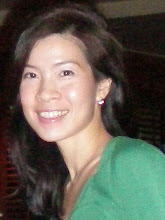 Today was my niece's wedding day! They had a lovely Catholic church service followed by a delightful lunch reception. Weddings tend to leave a lingering sweet, warm feeling to all who witness the joyful union of 2 becoming 1.
Today was my niece's wedding day! They had a lovely Catholic church service followed by a delightful lunch reception. Weddings tend to leave a lingering sweet, warm feeling to all who witness the joyful union of 2 becoming 1.Some couples have very similar characters and interests, yet others attract total opposites from themselves! As for DNA found in our cells...this is a story of the perfect complement. Each of the 2 strands comprising the DNA double helix were "made for each other"! Let me explain...
DNA - deoxyribonucleic acid, is made up of of 2 strands of polynucleotides. Each strand of polynucleotide is a polymer of monomer units called - nucleotides. Each nucleotide comprises 3 components - a phosphate group, a sugar group and a nitrogenous base.
Nucleotides join to make a single strand of polynucleotide via phosphodiester bonds between alternating phosphate and sugar groups. We call this the "sugar-phosphate backbone" of a single strand of polynucleotide.
Now, this is where the love story begins...How do 2 polynucleotide strands come together to become 1 DNA macromolecule? They do so through their complementary base pairing between their nitrogenous bases. There are 4 different nitrogenous bases - Adenine (A), Thymine (T), Cytosine (C) and Guanine (G). These display specific base pairing where "A" will always pair up with "T" and "C" will always pair up with "G". Hence, when there is an "A" on 1 polynucleotide strand, this will pair up with "T" on the opposite polynucleotide strand. Similarly, when there is a "C" on 1 polynucleotide strand, this will pair up with "G" on the opposite polynucleotide strand. It is via this complementary base pairing that 2 polynucleotide strands come together to make 1 DNA macromolecule. What wedded bliss!

3 comments:
Hi Dr Si-hoe! First of all, Happy New Year to you. Kudos for setting up the site! Its an easy read for beginners. Continue with the good job!
Would like to thank "anonymous" for the comment about the diagram. I have since changed it :)
Thanks Dr Sammi for useful blog, nice idea for communication about molecule level knowledge. I would like to write more but my English so poor.
Post a Comment